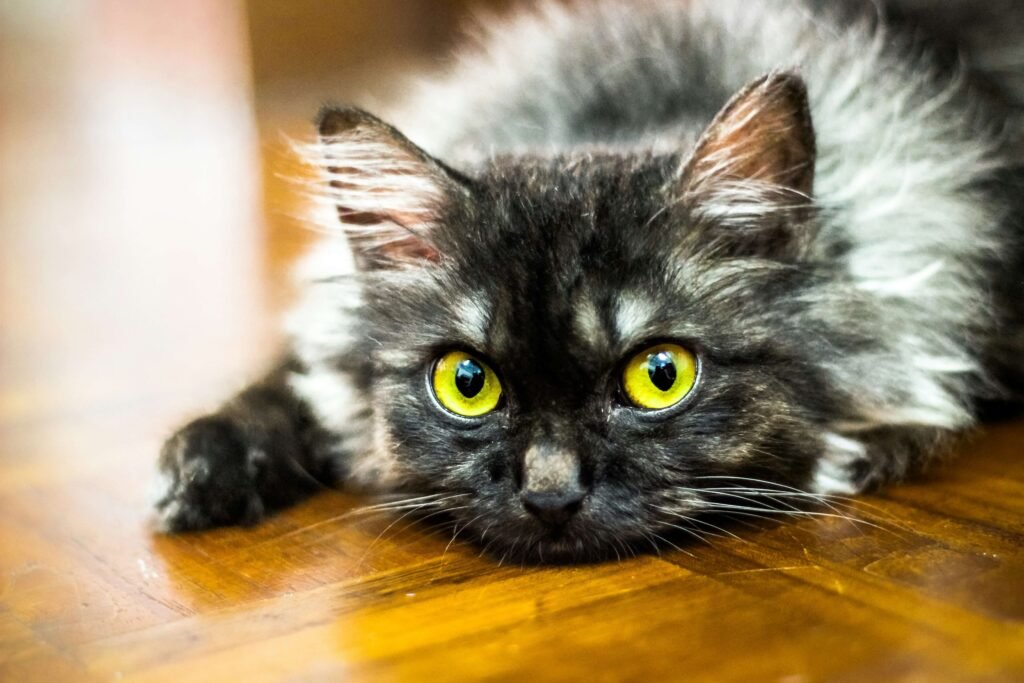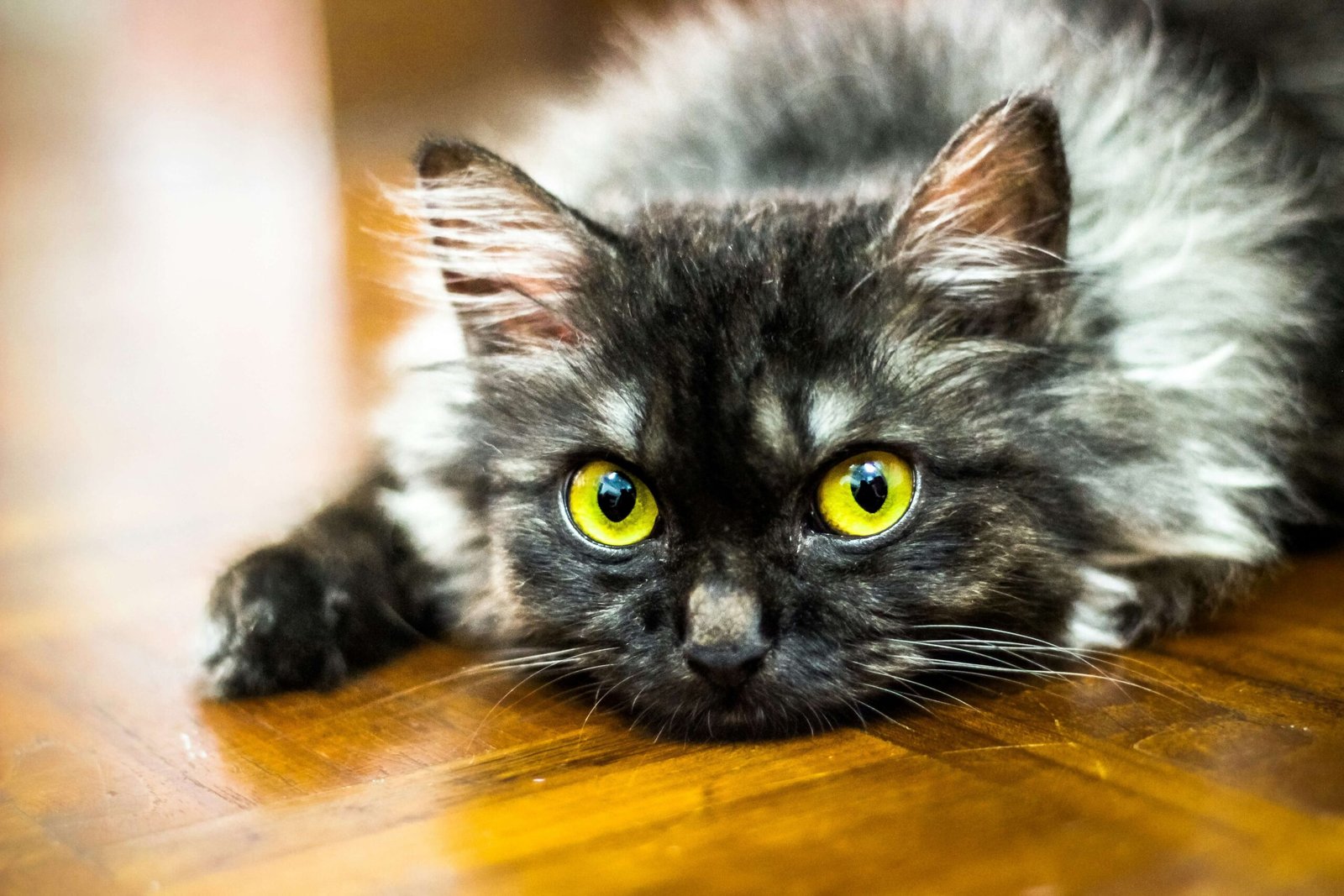How Often Should I Change Cat Litter? A Guide to Keeping Your Cat Happy and Healthy
Maintaining a clean litter box is one of the most important aspects of cat ownership. But how often should you change cat litter to ensure your feline friend stays comfortable and your home remains odor-free? The frequency of litter changes depends on several factors, including the type of litter, the number of cats in your household, and your cat’s habits. Neglecting this task can lead to unpleasant smells, hygiene issues, and even behavioral problems like litter box avoidance.
In this blog post, we’ll explore everything you need to know about changing cat litter, from daily maintenance tips to deep cleaning schedules. By the end, you’ll have a clear understanding of how to keep your cat’s litter box fresh and inviting.
General Guidelines for Changing Cat Litter
While every household is different, there are some general guidelines you can follow to determine how often to change your cat’s litter. These recommendations ensure both cleanliness and your cat’s comfort. Here’s what you need to know:
Scoop Daily
Remove waste and clumps of urine at least once a day to prevent odors and maintain hygiene.Top Up Regularly
Add fresh litter as needed to maintain an adequate depth, typically 2-3 inches, for proper absorption.Change Completely Every 1-2 Weeks
For non-clumping litter, replace the entire contents every 7-10 days. Clumping litter can last up to 2 weeks if scooped daily.Wash the Box Monthly
Clean the litter box thoroughly with soap and water once a month to remove residue and bacteria buildup.Adjust Based on Usage
If you have multiple cats, you may need to change the litter more frequently, as usage increases.
Following these guidelines will help you strike the right balance between convenience and cleanliness, ensuring your cat’s litter box remains a pleasant space.
Factors That Influence How Often You Should Change Cat Litter
Several factors can affect how often you need to change your cat’s litter. Understanding these variables will help you tailor your cleaning routine to your specific situation. Here are key considerations:
Type of Litter Used
Clumping litter lasts longer than non-clumping varieties, as it traps waste more effectively and is easier to scoop.Number of Cats in the Household
More cats mean more waste, requiring more frequent litter changes to stay ahead of odors and mess.Cat’s Bathroom Habits
Some cats use the litter box more frequently or produce more waste, necessitating extra attention.Litter Box Size and Design
Smaller or uncovered boxes may need more frequent cleaning due to limited capacity and increased odor exposure.Environmental Conditions
Humidity and temperature can impact how quickly litter absorbs moisture and develops odors.
By considering these factors, you can create a customized cleaning schedule that meets your cat’s needs and keeps your home fresh.
Check this guide 👉Is Cat Litter Toxic? Best 7 Expert Tips!
Check this guide 👉DIY Cat Litter Box: Best 7 Expert Tips!
Check this guide 👉How to Change Cat Litter: Best 7 Expert Tips!

Daily Maintenance Tips | Deep Cleaning Schedule |
|---|---|
Scoop waste and clumps daily | Replace all litter every 1-2 weeks |
Add fresh litter as needed | Wash the box with soap and water |
Check for odors and spills | Sanitize the box monthly |
Monitor litter depth (2-3 inches) | Dry the box thoroughly after washing |
Observe your cat’s litter habits | Inspect for cracks or damage |
Signs It’s Time to Change the Cat Litter Sooner
Sometimes, your cat’s behavior or the condition of the litter box will signal that it’s time for a change before your regular schedule. Here are signs to watch for:
Strong Odors
If the litter box smells overpowering despite daily scooping, it’s time for a full change.Visible Waste Build-Up
When clumps or waste accumulate faster than usual, fresh litter is needed sooner.Your Cat Avoids the Box
Cats are sensitive to cleanliness; if they start avoiding the litter box, it’s a red flag.Moisture or Mold
Excess moisture or mold growth indicates the litter has been in use too long and needs immediate replacement.Discoloration or Stains
Yellow or brown stains in the litter or on the box suggest poor hygiene and require action.
Paying attention to these signs ensures your cat’s litter box remains a safe and appealing space.
Tips for Maintaining a Fresh and Clean Litter Box
Keeping your cat’s litter box fresh involves more than just changing the litter. Here are additional tips to enhance cleanliness and prevent issues:
Use a Litter Liner
Placing a liner in the box makes emptying and cleaning easier, reducing mess and residue.Choose Odor-Control Litter
Opt for litters designed to neutralize odors, especially if you’re sensitive to smells.Place Boxes in Quiet Areas
A calm, accessible location encourages your cat to use the box regularly and reduces stress.Rotate Between Multiple Boxes
If you have multiple cats, provide one box per cat plus an extra to distribute usage evenly.Experiment with Litter Types
Try different textures and scents to find what your cat prefers while meeting your cleaning needs.
These tips will help you maintain a litter box that’s both functional and appealing to your feline companion.
Common Mistakes to Avoid When Changing Cat Litter
Even experienced cat owners can make mistakes when it comes to maintaining their cat’s litter box. Avoiding these common pitfalls will help you keep your cat happy and your home odor-free. Here are some errors to steer clear of:
Neglecting Daily Scooping
Skipping daily scooping can lead to unpleasant odors and discourage your cat from using the box.Using Harsh Cleaners
Strong chemicals like bleach or ammonia can irritate your cat’s sensitive nose and deter them from the box.Overfilling with Litter
Adding too much litter can make it difficult for your cat to dig and may lead to waste.Placing the Box in High-Traffic Areas
A noisy or busy location can stress your cat and make them avoid the litter box altogether.Ignoring Your Cat’s Preferences
Every cat is different; ignoring their preferences for texture or scent can result in resistance to the box.
By avoiding these mistakes, you’ll create a litter box environment that meets your cat’s needs and keeps your home fresh.
Benefits of Using Self-Cleaning Litter Boxes
Self-cleaning litter boxes have gained popularity among cat owners for their convenience and efficiency. If you’re considering upgrading to one, here are some benefits to keep in mind:
Time-Saving Automation
These boxes automatically sift and remove waste, reducing the need for frequent manual cleaning.Odor Control
Many models are designed to minimize odors by sealing waste quickly after use.Improved Hygiene
Self-cleaning mechanisms reduce the risk of bacteria buildup, keeping the box cleaner for longer.Less Stress for Cats
Some cats prefer consistent cleanliness, which these boxes provide without human intervention.Ideal for Busy Owners
If you have a hectic schedule, a self-cleaning box ensures your cat’s needs are met even when you’re unavailable.
While self-cleaning litter boxes come with upfront costs, their long-term benefits make them a worthwhile investment for many households.
Eco-Friendly Alternatives for Cat Litter
For environmentally conscious cat owners, switching to eco-friendly litter options can reduce your carbon pawprint while still meeting your cat’s needs. Here are some sustainable alternatives to consider:
Biodegradable Litter
Made from materials like corn, wheat, or wood, these litters break down naturally and are safe for composting.Recycled Paper Litter
This option uses recycled paper products, offering a soft texture and excellent odor control.Natural Clay-Free Options
Clay-based litters are non-biodegradable; switching to clay-free varieties reduces environmental impact.Flushable Litter
Certain plant-based litters are safe to flush, making disposal easier and more eco-friendly.DIY Solutions
Some owners experiment with homemade litter blends using natural ingredients like sawdust or shredded newspaper.
By choosing eco-friendly alternatives, you can minimize waste and contribute to a healthier planet, all while keeping your cat comfortable.
Frequently Asked Questions About Changing Cat Litter
Can I use baking soda to reduce litter box odors?
Yes, sprinkling baking soda in the litter can help neutralize odors naturally.
How do I know if my cat prefers clumping or non-clumping litter?
Observe their behavior; most cats prefer clumping litter for its ease of use.
Is it okay to leave the same litter for more than two weeks?
No, leaving litter too long can lead to hygiene issues and deter your cat from using the box.
What should I do if my cat stops using the litter box?
Check for cleanliness, health issues, or stress factors, and address them promptly.
Can I clean the litter box with vinegar?
Yes, vinegar is a natural cleaner, but rinse thoroughly to avoid residual scents that may repel your cat.
Final Thoughts: Prioritizing Cleanliness for Your Cat’s Well-Being
Changing cat litter regularly is a small but crucial part of being a responsible pet owner. By staying consistent with daily scooping, weekly changes, and monthly deep cleaning, you ensure your cat’s litter box remains a clean and inviting space. Not only does this promote good hygiene, but it also strengthens the bond between you and your feline companion by showing them care and respect. Remember, a happy cat means a happy home, and maintaining a fresh litter box is one of the simplest ways to achieve that. With these tips in mind, you’re well-equipped to keep your cat’s environment clean and comfortable for years to come.
Can a Cat Die from a Cold? Best 7 Expert Tips! Learn how to identify, treat, and prevent feline colds while understanding when to seek veterinary care for your cat’s health.
Cat Screaming for Food: Best 7 Expert Tips! Discover effective strategies to manage your cat's food-related vocalizations and create a peaceful feeding routine.
Aspiration Pneumonia in Cats: Best 7 Expert Tips! Discover causes, symptoms, and treatment advice to protect your cat’s respiratory health and ensure a speedy recovery.
Hip Dysplasia in Cats: Best 7 Expert Tips! Discover expert advice on managing hip dysplasia in cats, from symptoms and prevention to treatment options for a happier, healthier feline life.





